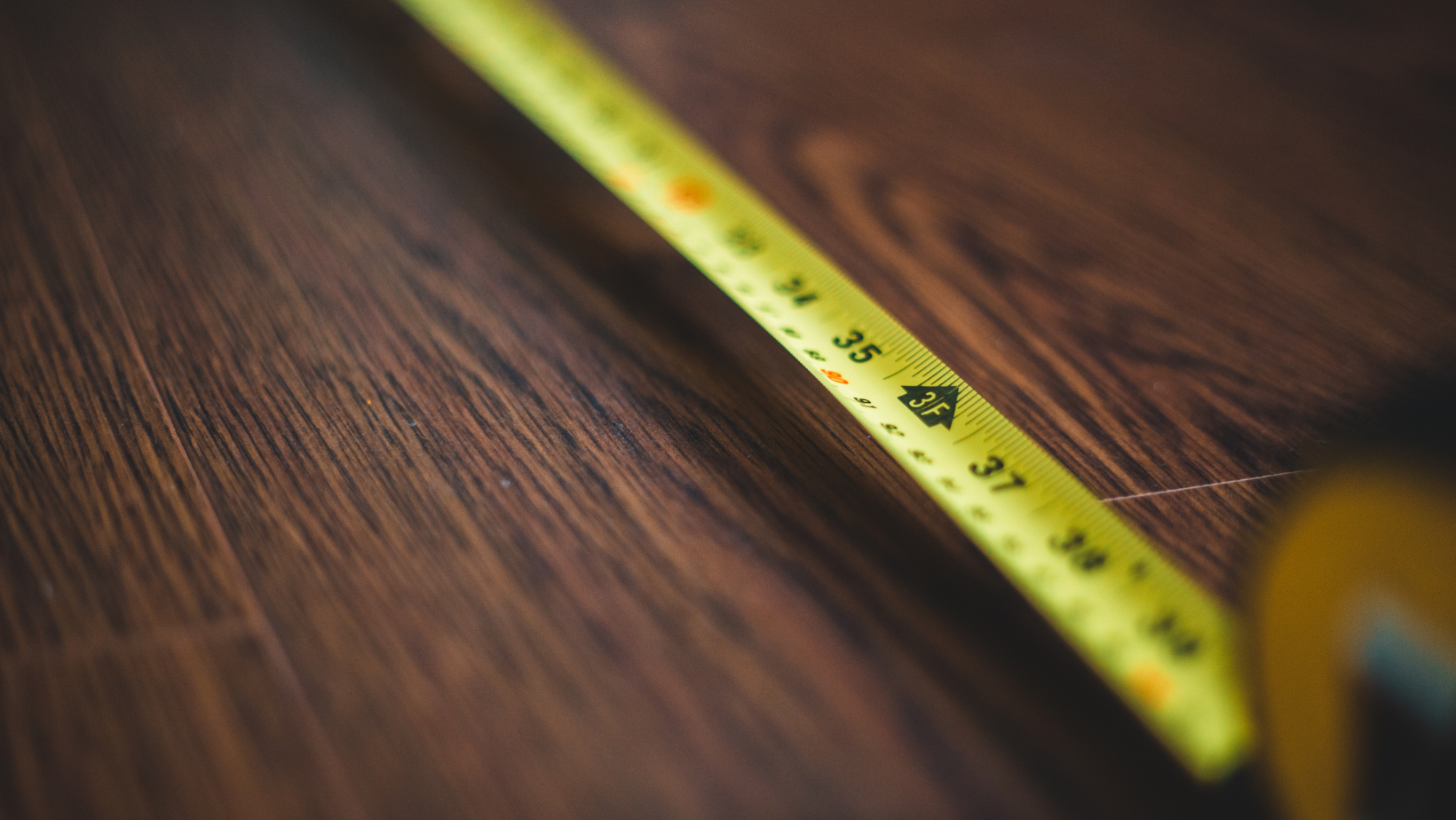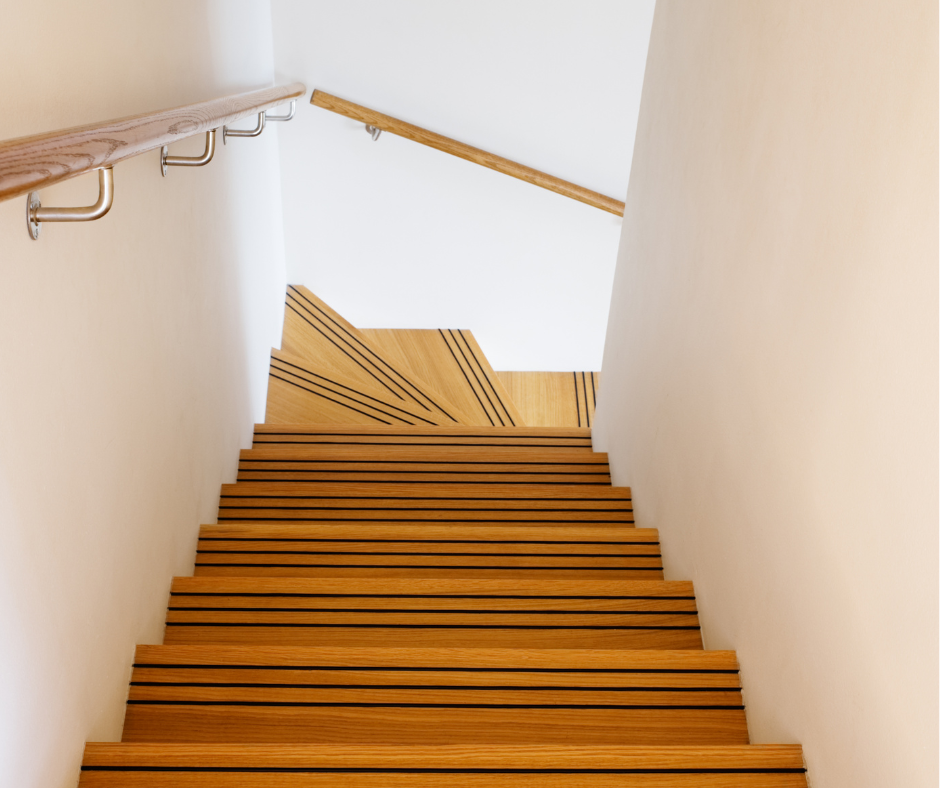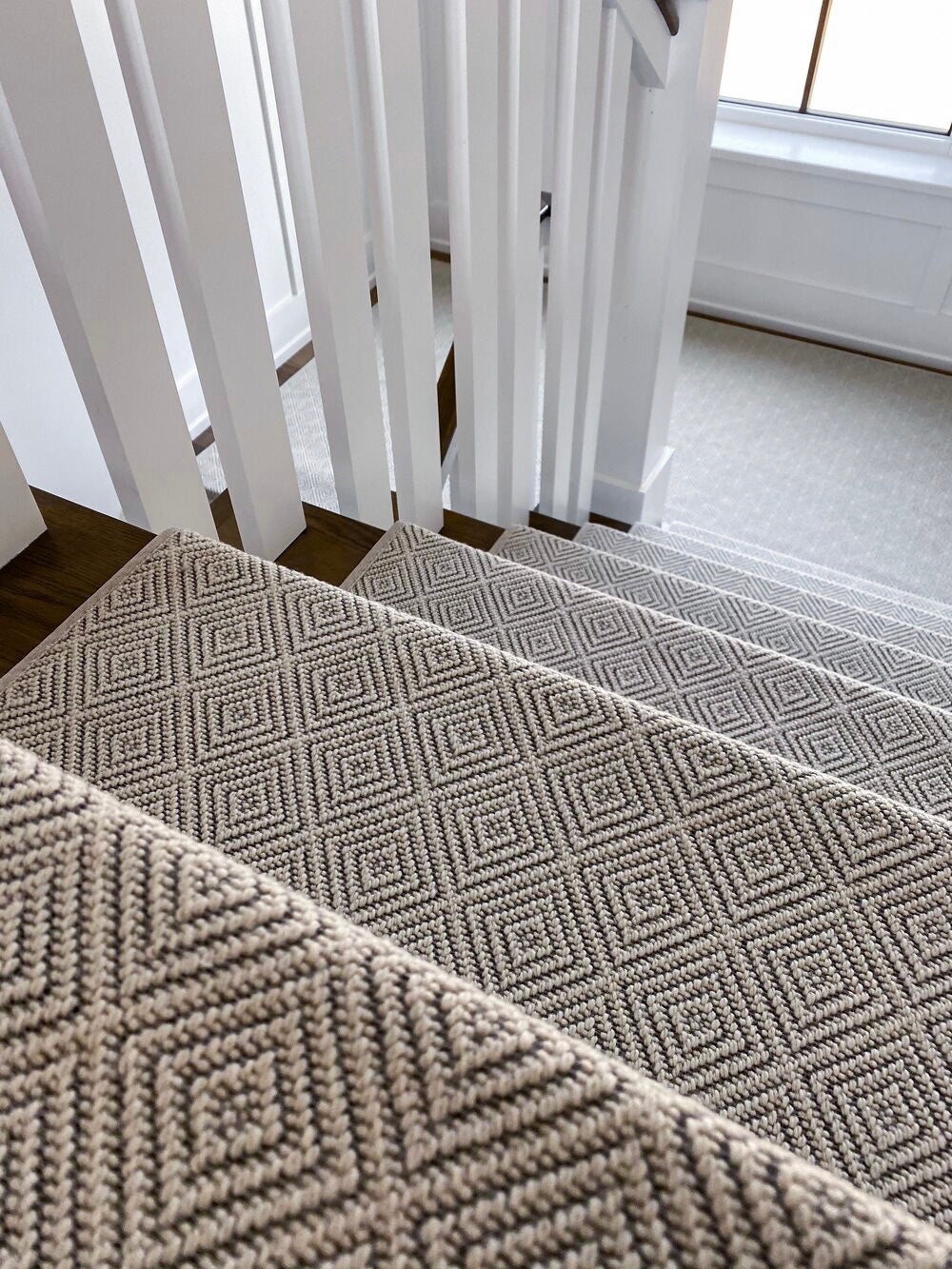Slippery stairs can be a safety risk, especially in high-traffic areas.
Learning how to secure rubber stair treads starts by applying a strong adhesive evenly to the back of each tread, pressing them firmly onto a clean, dry surface, and allowing proper curing time.
For added durability, screws or nails can reinforce the edges, ensuring long-term stability.
By following the correct installation steps, you can enhance safety, improve comfort, and extend the lifespan of your stair treads.
Whether you're securing carpet stair treads or rubber options, proper adhesion and maintenance are essential for keeping them in place.
Read on for a step-by-step installation guide, the best adhesives to use, and expert tips for long-lasting results.
Step-by-Step Guide to Installing Rubber Stair Treads
A well-executed installation is crucial to maintaining the durability and safety of rubber stair treads.
Follow this detailed step-by-step guide to ensure they remain secure.
Materials Needed
Before beginning the installation, gather the necessary materials:
-
Rubber stair treads
-
Adhesive (specifically designed for rubber)
-
Measuring tape
-
Utility knife
-
Trowel or notched spreader
-
Roller
-
Cleaning supplies (vacuum, mop, or cloth)
Installation Steps
-
Measure and Cut
-
-
Use a measuring tape to determine the exact size needed for each stair tread.
-
Cut the rubber treads with a utility knife, ensuring they are slightly smaller than the stair dimensions to allow for minor expansion.
-
-
Prepare the Stairs
-
-
Remove dirt, dust, and any existing adhesive from the staircase.
-
For wooden stairs, consider sanding any rough surfaces for better adhesion.
-
-
Apply Adhesive
-
-
Using a trowel or notched spreader, apply an even layer of adhesive to the back of each tread.
-
Ensure full coverage, especially at the edges, to prevent lifting over time.
-
-
Position the Tread
-
-
Align the tread with the step and press down firmly.
-
Start pressing from the center and work outward to eliminate air bubbles.
-
-
Secure the Tread
-
-
Use a roller to apply consistent pressure, ensuring the adhesive forms a strong bond with the stair surface.
-
In high-traffic areas, small finishing nails or screws can be added along the edges for reinforcement.
-
-
Allow to Cure
-
-
Follow the adhesive manufacturer’s recommendations for curing time.
-
Avoid using the stairs until the adhesive has completely set.
-
Choosing the Right Adhesive for Rubber Stair Treads
Using the correct adhesive is crucial to ensuring that rubber stair treads remain in place.
Here are the most effective adhesive options:
Rubber-Specific Adhesives
Rubber adhesives are formulated to create a strong bond between rubber and various surfaces.
They remain flexible, allowing for slight movement due to foot traffic or temperature changes.
Epoxy Adhesives
Epoxy-based adhesives provide an extremely strong bond that can withstand moisture and temperature fluctuations.
They are ideal for staircases in commercial spaces or outdoor environments.
Pressure-Sensitive Adhesives (PSAs)
PSAs offer immediate bonding when pressure is applied, making installation quicker.
They are ideal for residential settings where stairs experience moderate use.
Application Tips for Adhesive Success
-
Ensure a Clean Surface: Any dirt or moisture can weaken adhesion.
-
Apply Adhesive Evenly: Uneven application may lead to weak spots.
-
Follow Manufacturer’s Instructions: Different adhesives have unique drying times and application methods.
How to Maintain Rubber Stair Treads for Long-Term Security
Once installed, proper maintenance ensures that rubber stair treads remain secure and in good condition.
Regular Cleaning
-
Sweep and mop regularly to remove dirt and debris.
-
Use non-abrasive cleaners to prevent adhesive breakdown.
Inspect for Wear and Tear
-
Check for loose edges or lifting treads.
-
If adhesive weakens over time, reapply where necessary.
Reinforce Edges if Needed
-
If edges begin to curl, apply additional adhesive or use discreet finishing nails.
Troubleshooting Common Issues When Securing Rubber Stair Treads
Even with proper installation, some issues may arise.
Here’s how to address them effectively:
Tread Edges Lifting
-
Ensure adhesive was applied evenly.
-
Apply extra adhesive or use a stronger bonding agent if necessary.
Slipping or Shifting
-
If treads move out of place, consider using an epoxy-based adhesive.
-
Adding screws or nails along the edges can provide extra security.
Bubbling Underneath Treads
-
This is usually caused by trapped air.
-
When installing, press down firmly and use a roller to remove air pockets.
Comparing Rubber and Oak Stair Treads: Which is Easier to Secure?
Rubber and oak stair treads are two popular options, each requiring different installation techniques.
If you’ve ever wondered how to secure oak stair treads, the process shares some similarities with rubber but requires additional steps.
Key Differences in Installation
-
Rubber Treads
-
Require adhesive for bonding.
-
Offer flexibility and minor movement without causing structural issues.
-
Can be installed directly over wood, metal, or concrete surfaces.
-
Oak Stair Treads
-
Often secured using wood glue, screws, or finishing nails.
-
Require precise cutting to ensure a seamless fit.
-
Expansion and contraction with humidity changes need to be considered.
If you're installing both rubber and oak stair treads in a space, make sure to use adhesives and securing techniques specific to each material for the best results.
Why Rubber Stair Treads Are a Smart Choice for Safety and Durability
Rubber stair treads offer numerous advantages, making them a preferred option for residential and commercial spaces.
Enhanced Safety
-
Provides excellent grip to reduce slip-and-fall accidents.
-
Ideal for households with children, elderly individuals, or pets.
Exceptional Durability
-
Resistant to heavy foot traffic and wear.
-
Holds up well in both indoor and outdoor environments.
Comfort and Noise Reduction
-
Soft underfoot, reducing fatigue when walking up and down stairs.
-
Minimizes noise, making it ideal for multi-story buildings.
Easy Maintenance
-
Requires minimal upkeep, only needing occasional cleaning.
-
Resists stains and damage from daily use.
Eco-Friendly Options
-
Many rubber stair treads are made from recycled materials.
-
Can be recycled at the end of their lifespan, reducing environmental impact.
Stepping It Up
Knowing how to secure rubber stair treads properly ensures a safer, more comfortable stairway.
Whether you're installing them in a home, office, or business, following the correct steps for preparation, adhesive selection, and installation is key.
Additionally, if you're considering other stair tread materials, it's essential to understand how to secure oak stair treads properly as well.
Both materials offer unique benefits and require specific techniques for long-lasting security.
At Oak Valley Designs, we offer premium stair solutions that balance safety and aesthetics.
Whether you're looking for carpet stair treads, or stair landings, we have the perfect solution for your home.
Contact Us Today
-
Website: https://oakvalleydesigns.com/
-
Phone: 706.331.0315
-
Email: info@oakvalleydesigns.com
-
Address: 30 River Ct SW Bldg E Cartersville, Ga 30120




